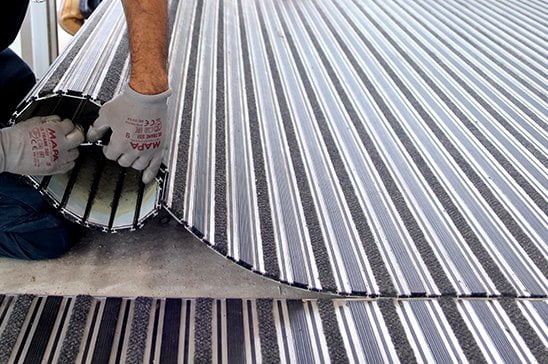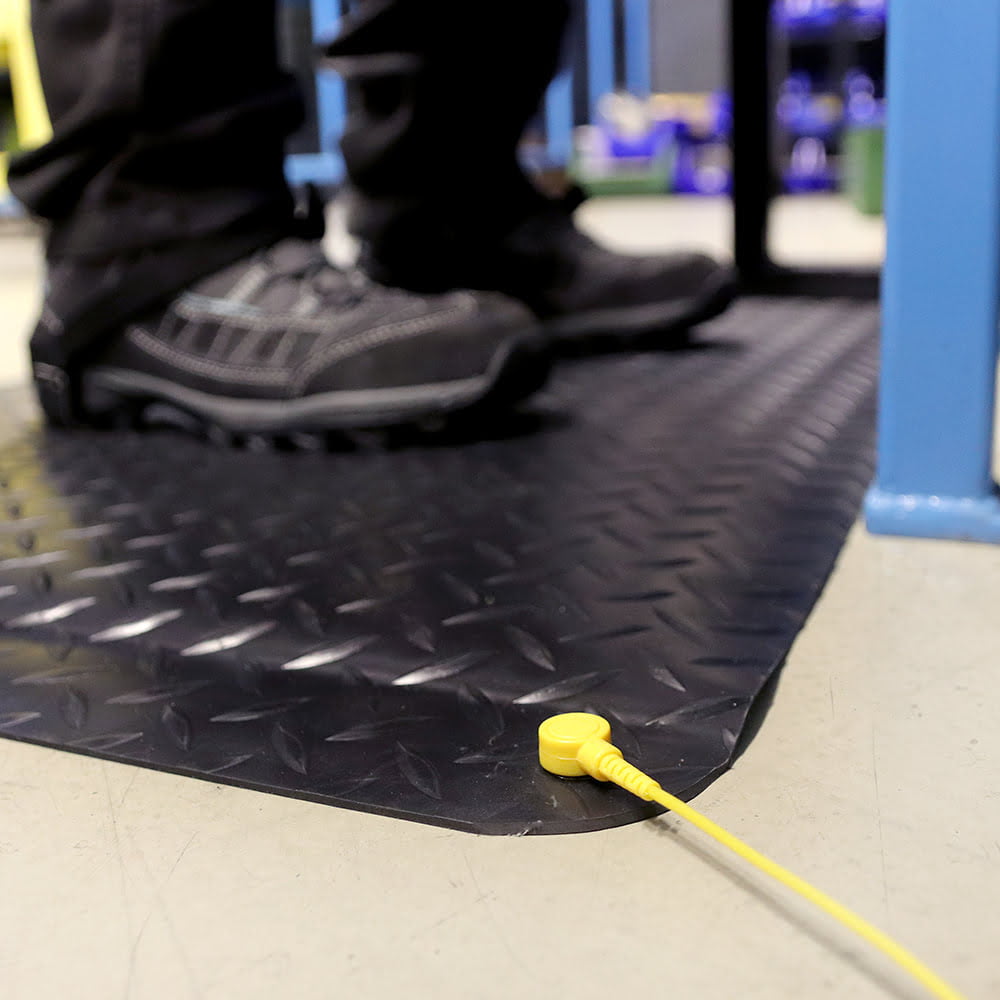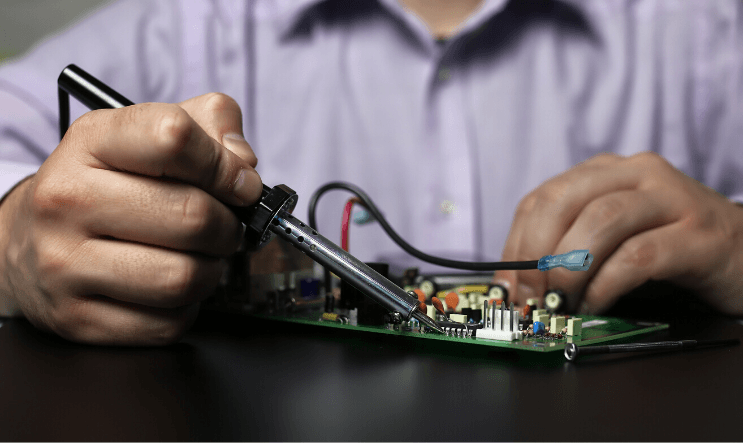What’s the difference between ESD mats and anti-static matting?
ESD mats and anti-static mats for the workplace are both conductive products. This means that both, anti-static and ESD mats, dissipate electrical energy into the floor and thus prevent static discharge or even shock.
What is ESD and how is ESD created?
ESD stands for electrostatic discharge ( ESD ).
ESD is the sudden release of electricity between two electrically charged objects. Electron transfer from one surface to another can result from walking, rubbing or sliding on a material.
Static electricity can arise, for example, when we simply walk on a carpet or come into contact with another person’s clothing. We touch a metal doorknob and get, ouch, a knock sometimes! Many surfaces conduct static electricity and that needs to be controlled. We cannot see the transfer of electricity, it is an invisible threat.
















